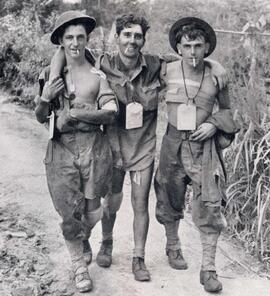BERLIN CRISIS, THE: US Government papers
- MFF12
- Collection
- 1953-1988
The collection presents an integrated record of US decision making during the 1958-1962 confrontation between the Soviet Union and the United States over the situation of Berlin specifically, and Germany generally. The collection includes primarily records of Eisenhower's telephone conversations with Secretary of State John Foster Dulles and Under Secretary of State Christian Archibald Herter and minutes of Eisenhower's discussions with Gen Andrew Jackson Goodpaster, Defense Liaison Officer and Staff Secretary to the President and, for the Kennedy administration, records mainly prepared by McGeorge Bundy, Special Assistant to the President for National Security Affairs, and Laurence J Legere, Assistant to the Military Representative of the President, 1961-1962 and Senior National Security Council Staff Member, 1962-1963. The collection also includes records of East-West negotiations over Berlin and Germany, including US-Soviet 'exploratory discussions', 1958-1962; material relating to Allied efforts to develop a co-ordinated negotiating position during the first months of 1959 and the subsequent protracted talks in Geneva, Switzerland, May-Aug 1959; material relating to LIVE OAK, the tripartite American-British-French Berlin military contingency planning group under the direction of Gen Lauris Norstad, Commander- in-Chief US European Command and Supreme Allied Commander Europe, Apr 1959; papers relating to US and Soviet nuclear capabilities, 1959-1962; Berlin checkpoint crises, 1959-1961; a complete record of the summit meeting in Sep 1959 between Eisenhower and Soviet Prime Minister Nikita Sergeyevich Khrushchev at Camp David, Maryland, USA; papers relating to Western preparations for discussions on Berlin at the aborted summit of May 1960; papers relating to the 'Wall Crisis', including material relating to the refugee problem in the German Democratic Republic and US and Allied reactions to the construction of the Berlin Wall, Aug 1961; US and Soviet confrontations at US zone checkpoint, 'Checkpoint Charlie', Oct 1961; minutes of conversations between Soviet and US policy makers during the Kennedy administration, including a compete record of the talks between (David) Dean Rusk, US Secretary of State, and Andrei Andreevich Gromyko, Soviet Foreign Minister, Gromyko and Llewellyn E Thompson, US Ambassador to the Soviet Union, and Rusk and Anatoly Federovich Dobrynin, Soviet Ambassador to the US, 1962. It should be noted that papers of major Kennedy administration officials remain closed due to security processing delays at the John F Kennedy Library. Thus, files after Sep 1961 in the National Security Files remain largely sealed. Moreover, documents from files that have been reviewed continue to be withheld or heavily excised. Also, many of the Central Intelligence Agency and US Department of Defense files from 1961-1962 continue to be withheld or heavily excised.


